184 have author last names that start with V have author last names that start with V
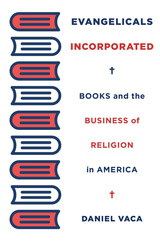
A new history explores the commercial heart of evangelical Christianity.
American evangelicalism is big business. For decades, the world’s largest media conglomerates have sought out evangelical consumers, and evangelical books have regularly become international best sellers. In the early 2000s, Rick Warren’s The Purpose Driven Life spent ninety weeks on the New York Times Best Sellers list and sold more than thirty million copies. But why have evangelicals achieved such remarkable commercial success?
According to Daniel Vaca, evangelicalism depends upon commercialism. Tracing the once-humble evangelical book industry’s emergence as a lucrative center of the US book trade, Vaca argues that evangelical Christianity became religiously and politically prominent through business activity. Through areas of commerce such as branding, retailing, marketing, and finance, for-profit media companies have capitalized on the expansive potential of evangelicalism for more than a century.
Rather than treat evangelicalism as a type of conservative Protestantism that market forces have commodified and corrupted, Vaca argues that evangelicalism is an expressly commercial religion. Although religious traditions seem to incorporate people who embrace distinct theological ideas and beliefs, Vaca shows, members of contemporary consumer society often participate in religious cultures by engaging commercial products and corporations. By examining the history of companies and corporate conglomerates that have produced and distributed best-selling religious books, bibles, and more, Vaca not only illustrates how evangelical ideas, identities, and alliances have developed through commercial activity but also reveals how the production of evangelical identity became a component of modern capitalism.


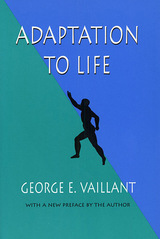
Between 1939 and 1942, one of America's leading universities recruited 268 of its healthiest and most promising undergraduates to participate in a revolutionary new study of the human life cycle. The originators of the program, which came to be known as the Grant Study, felt that medical research was too heavily weighted in the direction of disease, and their intent was to chart the ways in which a group of promising individuals coped with their lives over the course of many years.
Nearly forty years later, George E. Vaillant, director of the Study, took the measure of the Grant Study men. The result was the compelling, provocative classic, Adaptation to Life, which poses fundamental questions about the individual differences in confronting life's stresses. Why do some of us cope so well with the portion life offers us, while others, who have had similar advantages (or disadvantages), cope badly or not at all? Are there ways we can effectively alter those patterns of behavior that make us unhappy, unhealthy, and unwise?
George Vaillant discusses these and other questions in terms of a clearly defined scheme of "adaptive mechanisms" that are rated mature, neurotic, immature, or psychotic, and illustrates, with case histories, each method of coping.

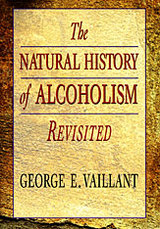
When The Natural History of Alcoholism was first published in 1983, it was acclaimed in the press as the single most important contribution to the literature on alcoholism since the first edition of Alcoholic Anonymous’s Big Book. George Vaillant took on the crucial questions of whether alcoholism is a symptom or a disease, whether it is progressive, whether alcoholics differ from others before the onset of their alcoholism, and whether alcoholics can safely drink. Based on an evaluation of more than 600 individuals followed for over forty years, Vaillant’s monumental study offered new and authoritative answers to all of these questions.
In this updated version of his classic book, Vaillant returns to the same subjects with the perspective gained from fifteen years of further follow-up. Alcoholics who had been studied to age 50 in the earlier book have now reached age 65 and beyond, and Vaillant reassesses what we know about alcoholism in light of both their experiences and the many new studies of the disease by other researchers. The result is a sharper focus on the nature and course of this devastating disorder as well as a sounder foundation for the assessment of various treatments.
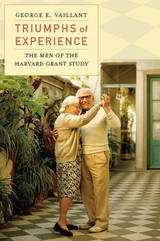
At a time when many people around the world are living into their tenth decade, the longest longitudinal study of human development ever undertaken offers some welcome news for the new old age: our lives continue to evolve in our later years, and often become more fulfilling than before.
Begun in 1938, the Grant Study of Adult Development charted the physical and emotional health of over 200 men, starting with their undergraduate days. The now-classic Adaptation to Life reported on the men’s lives up to age 55 and helped us understand adult maturation. Now George Vaillant follows the men into their nineties, documenting for the first time what it is like to flourish far beyond conventional retirement.
Reporting on all aspects of male life, including relationships, politics and religion, coping strategies, and alcohol use (its abuse being by far the greatest disruptor of health and happiness for the study’s subjects), Triumphs of Experience shares a number of surprising findings. For example, the people who do well in old age did not necessarily do so well in midlife, and vice versa. While the study confirms that recovery from a lousy childhood is possible, memories of a happy childhood are a lifelong source of strength. Marriages bring much more contentment after age 70, and physical aging after 80 is determined less by heredity than by habits formed prior to age 50. The credit for growing old with grace and vitality, it seems, goes more to ourselves than to our stellar genetic makeup.
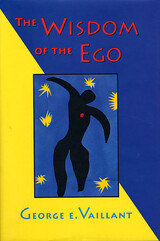

Black, French, and African is the first biography in English of the extraordinary poet, politician and intellectual Léopold Sédar Senghor. As a prizewinning poet in French, Senghor was the first African to be elected to the Académie Française for his contribution to French culture; as a statesman, he was the first president of independent Senegal from 1961 to 1980, a nation still among the most democratic in Africa; as an intellectual, he was an originator of the theory of Négritude—a term that to him meant “the manner of self-expression of the black character, the black world, black civilization”—and a leader of West African independence.
Through her sleuthing, interviewing, and ferreting out details over a period of years, Janet Vaillant has drawn a captivating multi-dimensional portrait of this unusual man. She introduces us to Senghor the child, through descriptions of his family, the traditional culture of the Serer people of Senegal, and the system of French colonialism that gave him his contradictory sense of “place”; then to Senghor the young man, as he pursued his academic and literary education in Paris of the late 1920s. Finally, she moves on to his involvement in this special fraternity of “men of color” that crystallized in Paris in the mid 1930s and that fostered the theory of Negritude for which Senghor became such an articulate spokesman.
Senghor’s biography contributes to an understanding of postindependence African leadership as well as French and African-American intellectual history and literature. Vaillant examines links between his personal experience, his political work, and his poetry, and the effects of his political ideology on state-building. She also provides us with larger context in which Senghor worked—his debts and contributions to the writing and thinking of blacks in America and France, and his importance as a leader of a colonized people dealing with the industrialized West.
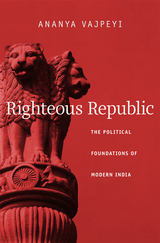
What India’s founders derived from Western political traditions as they struggled to free their country from colonial rule is widely understood. Less well-known is how India’s own rich knowledge traditions of two and a half thousand years influenced these men as they set about constructing a nation in the wake of the Raj. In Righteous Republic, Ananya Vajpeyi furnishes this missing account, a ground-breaking assessment of modern Indian political thought.
Taking five of the most important founding figures—Mohandas Gandhi, Rabindranath Tagore, Abanindranath Tagore, Jawaharlal Nehru, and B. R. Ambedkar—Vajpeyi looks at how each of them turned to classical texts in order to fashion an original sense of Indian selfhood. The diverse sources in which these leaders and thinkers immersed themselves included Buddhist literature, the Bhagavad Gita, Sanskrit poetry, the edicts of Emperor Ashoka, and the artistic and architectural achievements of the Mughal Empire. India’s founders went to these sources not to recuperate old philosophical frameworks but to invent new ones. In Righteous Republic, a portrait emerges of a group of innovative, synthetic, and cosmopolitan thinkers who succeeded in braiding together two Indian knowledge traditions, the one political and concerned with social questions, the other religious and oriented toward transcendence.
Within their vast intellectual, aesthetic, and moral inheritance, the founders searched for different aspects of the self that would allow India to come into its own as a modern nation-state. The new republic they envisaged would embody both India’s struggle for sovereignty and its quest for the self.

Throughout Africa, Asia, and Latin America public health professionals and paraprofessionals work to control serious, frequent and preventable causes of death and sickness among women and children. Despite international agreement about which health programs to implement and huge investments to support them, avoidable deaths remain high. One reason is the inadequate quality with which programs are implemented.
Assessing Child Survival Programs in Developing Countries provides local health system managers with basic principles for rapid precise program monitoring and evaluation in difficult tropical conditions. Joseph Valadez explains how to adapt Lot Quality Assurance Sampling (LQAS) as used in industrial quality control more than half a century ago, to assess health program coverage and technical quality of service providers. He shows that by examining no more than 19 children from a health facility catchment area a manager can judge whether coverage with child survival interventions has reached a minimal level, and how to observe health workers perform a task 6 times to judge their technical competency.
Joseph Valadez demonstrates that quick assessment is not necessarily dirty, and can provide the information needed to enhance child survival throughout the developing world. In that spirit Assessing Child Survival Programs in Developing Countries is a path breaking text book of modern health services research that both practitioners and students will find indispensable and understandable.
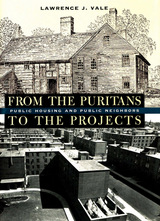
From the almshouses of seventeenth-century Puritans to the massive housing projects of the mid-twentieth century, the struggle over housing assistance in the United States has exposed a deep-seated ambivalence about the place of the urban poor. Lawrence J. Vale's groundbreaking book is both a comprehensive institutional history of public housing in Boston and a broader examination of the nature and extent of public obligation to house socially and economically marginal Americans during the past 350 years.
First, Vale highlights startling continuities both in the way housing assistance has been delivered to the American poor and in the policies used to reward the nonpoor. He traces the stormy history of the Boston Housing Authority, a saga of entrenched patronage and virulent racism tempered, and partially overcome, by the efforts of unyielding reformers. He explores the birth of public housing as a program intended to reward the upwardly mobile working poor, details its painful transformation into a system designed to cope with society's least advantaged, and questions current policy efforts aimed at returning to a system of rewards for responsible members of the working class. The troubled story of Boston public housing exposes the mixed motives and ideological complexity that have long characterized housing in America, from the Puritans to the projects.

In Reclaiming Public Housing, Lawrence Vale explores the rise, fall, and redevelopment of three public housing projects in Boston. Vale looks at these projects from the perspectives of their low-income residents and assesses the contributions of the design professionals who helped to transform these once devastated places during the 1980s and 1990s.
The three similarly designed projects were built at the same time under the same government program and experienced similar declines. Each received comparable funding for redevelopment, and each design team consisted of first-rate professionals who responded with similar "defensible space" redesign plans. Why, then, was one redevelopment effort a nationally touted success story, another only a mixed success, and the third a widely acknowledged failure? The book answers this key question by situating each effort in the context of specific neighborhood struggles. In each case, battles over race and poverty played out somewhat differently, yielding wildly different results.
At a moment when local city officials throughout America are demolishing more than 100,000 units of low-income housing, this crucial book questions the conventional wisdom that all large public housing projects must be demolished and rebuilt as mixed-income neighborhoods.

The Roman epic retelling of the quest for the golden fleece.
Valerius Flaccus, Gaius, Latin poet who flourished in the period ca. AD 70–90, composed in smooth and sometimes obscure style an incomplete epic Argonautica in eight books, on the auest for the golden fleece. The poem is typical of his age, being a free re-handling of the story already told by Apollonius Rhodius, to whom he is superior in arrangement, vividness, and description of character. Valerius’ poem shows much imitation of the language and thought of Virgil, and much learning. The chief interest of the epic lies in the relationship between Medea and Jason, especially the growth of Medea’s love, where Valerius is at his best. The long series of adventures and various Roman allusions suggest that the poet meant to do honor to Vespasian (to whom the epic is dedicated) with special reference to that emperor’s ships in waters around Britain.

Exemplary wisdom from ancient Rome.
Valerius Maximus compiled his handbook of notable deeds and sayings during the reign of Tiberius (AD 14–37). The collection was admired in antiquity and has recently been attracting renewed scholarly attention. Yet to date there has been no modern English translation of Memorable Doings and Sayings. This work is now added to the Loeb Classical Library, in two volumes, a freshly edited Latin text facing D. R. Shackleton Bailey’s pleasing and authoritative translation.
Valerius arranges his instructive examples in short chapters, each focused on a particular virtue, vice, religious practice, or traditional custom—including Omens, Dreams, Anger, Cruelty, Bravery, Fidelity, Gratitude, Friendship, Parental Love. The moral undercurrent of this collection is readily apparent. But Valerius tells us that the book’s purpose is simply practical: he decided to select worthwhile material from famous writers so that people looking for illustrative examples might be spared the trouble of research. Whatever the author’s intention, his book is an interesting source of information on Roman attitudes toward religion and moral values in the first century.

Exemplary wisdom from ancient Rome.
Valerius Maximus compiled his handbook of notable deeds and sayings during the reign of Tiberius (AD 14–37). The collection was admired in antiquity and has recently been attracting renewed scholarly attention. Yet to date there has been no modern English translation of Memorable Doings and Sayings. This work is now added to the Loeb Classical Library, in two volumes, a freshly edited Latin text facing D. R. Shackleton Bailey’s pleasing and authoritative translation.
Valerius arranges his instructive examples in short chapters, each focused on a particular virtue, vice, religious practice, or traditional custom—including Omens, Dreams, Anger, Cruelty, Bravery, Fidelity, Gratitude, Friendship, Parental Love. The moral undercurrent of this collection is readily apparent. But Valerius tells us that the book’s purpose is simply practical: he decided to select worthwhile material from famous writers so that people looking for illustrative examples might be spared the trouble of research. Whatever the author’s intention, his book is an interesting source of information on Roman attitudes toward religion and moral values in the first century.



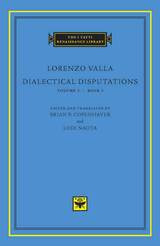
Lorenzo Valla (1407–1457) ranks among the greatest scholars and thinkers of the Renaissance. He secured lasting fame for his brilliant critical skills, most famously in his exposure of the “Donation of Constantine,” the forged document upon which the papacy based claims to political power. Lesser known in the English-speaking world is Valla’s work in the philosophy of language—the basis of his reputation as the greatest philosopher of the humanist movement.
Dialectical Disputations, translated here for the first time into any modern language, is his principal contribution to the philosophy of language and logic. With this savage attack on the scholastic tradition of Aristotelian logic, Valla aimed to supersede it with a new logic based on the actual historical usage of classical Latin and on a commonsense approach to semantics and argument. Valla provides a logic that could be used by lawyers, preachers, statesmen, and others who needed to succeed in public debate—one that was stylistically correct and rhetorically elegant, and thus could dispense with the technical language of the scholastics, a “tribe of Peripatetics, perverters of natural meanings.” Valla’s reformed dialectic became a milestone in the development of humanist logic and contains startling anticipations of modern theories of semantics and language.
Volume 1 contains Book I, in which Valla refutes Aristotle’s logical works on the categories, transcendentals, and predicables, with excursions into natural and moral philosophy and theology.
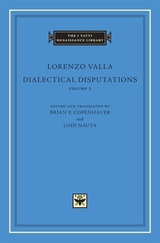
Lorenzo Valla (1407–1457) ranks among the greatest scholars and thinkers of the Renaissance. He secured lasting fame for his brilliant critical skills, most famously in his exposure of the “Donation of Constantine,” the forged document upon which the papacy based claims to political power. Lesser known in the English-speaking world is Valla’s work in the philosophy of language—the basis of his reputation as the greatest philosopher of the humanist movement.
Dialectical Disputations, translated here for the first time into any modern language, is his principal contribution to the philosophy of language and logic. With this savage attack on the scholastic tradition of Aristotelian logic, Valla aimed to supersede it with a new logic based on the actual historical usage of classical Latin and on a commonsense approach to semantics and argument. Valla provides a logic that could be used by lawyers, preachers, statesmen, and others who needed to succeed in public debate—one that was stylistically correct and rhetorically elegant, and thus could dispense with the technical language of the scholastics, a “tribe of Peripatetics, perverters of natural meanings.” Valla’s reformed dialectic became a milestone in the development of humanist logic and contains startling anticipations of modern theories of semantics and language.
Volume 2 contains Books II–III, in which Valla refutes Aristotle’s logical works on propositions, topics, and the syllogistic.

How is something as broad and complex as a personality organized? What makes up a satisfactory theory of personality? In this ambitious book, Jaan Valsiner argues for a theoretical integration of two long-standing approaches: the individualistic tradition of personalistic psychology, typified by the work of William Stern and Gordon Allport, and the semiotic tradition of cultural-historical psychology, typified by the work of L. S. Vygotsky. The two are brought together in Valsiner's theory, which highlights the sign-constructing and sign-using nature of all distinctively human psychological processes.
Arguing that the individualistic and the cultural traditions differ largely in emphasis, Valsiner unites them by focusing on the intricate relations between personality and its social context, and their interplay in personality development. The semiotic devices internalized from the social environment shape an individual's development, and the flow of thinking, feeling, and acting. Valsiner uses this theoretical approach to illuminate two remarkable, and remarkably different, phenomena: letters from the mother of Allport's college roommate, a key empirical case in Allport's theory, and the ritual movements of a Hindu temple dancer. Valsiner shows how both exemplify basic human tendencies for the cultural construction of life courses.
The Guided Mind shows the fundamental unities in the vastly diverse phenomenon of human personality.


Since his death in April 12 Francis Bacon has been acclaimed as one of the very greatest of modern painters. Yet most analyses of Bacon actually neutralize his work by discussing it as an existential expression and as the horrifying communication of an isolated individual—which simply transfers the pain in the paintings back to Bacon himself. This study is the first attempt to account for the pain of the viewer.
It is also, most challengingly, an explanation of what Bacon’s art tells us about ourselves as individuals. For, during this very personal investigation, the author comes to realize that the effect of Bacon’s work is founded upon the way that each of us carves our identity, our “self,” from the inchoate evidence of our senses, using the conventions of representation as tools. It is in his warping of these conventions of the senses, rather than in the superficial distortion of his images, that Bacon most radically confronts “art,” and ourselves as individuals.


A beautifully designed selection of the finest Italian Renaissance drawings from the British Museum, the Louvre and other French public collections, giving remarkable insight into the creative processes of some of the greatest artists in history.
This book features masterpieces of Italian Renaissance drawings from the British Museum, the Louvre and other French public collections in Lille, Rennes and Chantilly.
Beginning with an examination of drawing as part of the creative process, and showing how it reveals the artist's mind at work, the author explains in detail the materials and techniques used in Renaissance drawings. It also considers how drawings were used, how they changed stylistically through the period and how they varied in different regions of Italy. It concludes with a brief look at connoisseurship and collecting.
The main body of the book showcases 112 of the finest drawings by more than 40 Italian Renaissance masters, including Michelangelo, Leonardo, Botticelli, Raphael and Andrea del Sarto, accompanied by a concise sketch of the life and work of each artist. Arranged chronologically, they reveal stylistic and geographical trends as well as personal interactions between the artists themselves, and provide an extraordinary insight in to the artistic world of Renaissance Italy.


The pioneering writer Higuchi Ichiyō (1872–1896) has been described as “the last woman of old Japan,” a consummate stylist of classical prose, whose command of the linguistic and rhetorical riches of the premodern tradition might suggest that her writings are relics of the past with no concern for the problems of modern life.
Timothy Van Compernolle investigates the social dimensions of Ichiyō’s artistic imagination and argues that she creatively reworked the Japanese literary tradition in order to understand, confront, and critique the emerging modernity of the Meiji period. For Ichiyō, the classical canon was a reservoir of tropes and paradigms that could be reshaped and renewed as a way to explore the sociopolitical transformations of the 1890s and cast light upon the human costs of modernization.
Drawing critical momentum from the dialogical theory of Mikhail Bakhtin, the author explores in five of Ichiyō’s best known stories how traditional rhetoric and literary devices are dialogically engaged with discourses associated with modernity within the pages of Ichiyō’s narratives. In its close, sensitive readings of Ichiyō’s oeuvre, The Uses of Memory not only complicates the scholarly discussion of her position in the Japanese literary canon, but also broaches larger theoretical issues.

Many books have been written about strategy, tactics, and great commanders. This is the first book to deal exclusively with the nature of command itself, and to trace its development over two thousand years from ancient Greece to Vietnam. It treats historically the whole variety of problems involved in commanding armies, including staff organization and administration, communications methods and technologies, weaponry, and logistics. And it analyzes the relationship between these problems and military strategy.
In vivid descriptions of key battles and campaigns—among others, Napoleon at Jena, Moltke’s Königgrätz campaign, the Arab–Israeli war of 1973, and the Americans in Vietnam—Martin van Creveld focuses on the means of command and shows how those means worked in practice. He finds that technological advances such as the railroad, breech-loading rifles, the telegraph and later the radio, tanks, and helicopters all brought commanders not only new tactical possibilities but also new limitations.
Although vast changes have occurred in military thinking and technology, the one constant has been an endless search for certainty—certainty about the state and intentions of the enemy’s forces; certainty about the manifold factors that together constitute the environment in which war is fought, from the weather and terrain to radioactivity and the presence of chemical warfare agents; and certainty about the state, intentions, and activities of one’s own forces. The book concludes that progress in command has usually been achieved less by employing more advanced technologies than by finding ways to transcend the limitations of existing ones.

China’s mid-twentieth-century wars pose extraordinary interpretive challenges. The issue is not just that the Chinese fought for such a long time—from the Marco Polo Bridge Incident of July 1937 until the close of the Korean War in 1953—across such vast territory. As Hans van de Ven explains, the greatest puzzles lie in understanding China’s simultaneous external and internal wars. Much is at stake, politically, in how this story is told.
Today in its official history and public commemorations, the People’s Republic asserts Chinese unity against Japan during World War II. But this overwrites the era’s stark divisions between Communists and Nationalists, increasingly erasing the civil war from memory. Van de Ven argues that the war with Japan, the civil war, and its aftermath were in fact of a piece—a singular process of conflict and political change. Reintegrating the Communist uprising with the Sino-Japanese War, he shows how the Communists took advantage of wartime to increase their appeal, how fissures between the Nationalists and Communists affected anti-Japanese resistance, and how the fractious coalition fostered conditions for revolution.
In the process, the Chinese invented an influential paradigm of war, wherein the Clausewitzian model of total war between well-defined interstate enemies gave way to murky campaigns of national liberation involving diverse domestic and outside belligerents. This history disappears when the realities of China’s mid-century conflicts are stripped from public view. China at War recovers them.
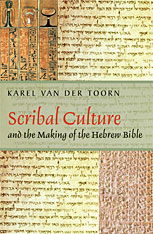
We think of the Hebrew Bible as the Book--and yet it was produced by a largely nonliterate culture in which writing, editing, copying, interpretation, and public reading were the work of a professional elite. The scribes of ancient Israel are indeed the main figures behind the Hebrew Bible, and in this book Karel van der Toorn tells their story for the first time. His book considers the Bible in very specific historical terms, as the output of the scribal workshop of the Second Temple active in the period 500-200 BCE. Drawing comparisons with the scribal practices of ancient Egypt and Mesopotamia, van der Toorn clearly details the methods, the assumptions, and the material means of production that gave rise to biblical texts; then he brings his observations to bear on two important texts, Deuteronomy and Jeremiah.
Traditionally seen as the copycats of antiquity, the scribes emerge here as the literate elite who held the key to the production as well as the transmission of texts. Van der Toorn's account of scribal culture opens a new perspective on the origins of the Hebrew Bible, revealing how the individual books of the Bible and the authors associated with them were products of the social and intellectual world of the scribes. By taking us inside that world, this book yields a new and arresting appreciation of the Hebrew Scriptures.

Josef van Ess is the world's most distinguished scholar of classical kalam, the Muslim theology that was the precursor to, and foundation for, modern Islam. This book makes available, for the first time in English, the fruit of van Ess's thirty-five years of work in the field. A lucid and authoritative introduction to classical Islam, it opens a window on the intellectual world that gave rise to Muslim theology.
A sustained look at important issues in early kalam, The Flowering of Muslim Theology discusses the emergence of theology in the classical period and offers acute and illuminating comparisons with the Christian (and Jewish) traditions. Van Ess looks at the issue of heresy, at early ideas about straying from true belief. In a substantial and original instance of Koranic exegesis, he considers a problem much debated among classical theologians: whether it is possible to see God. He examines the different ways in which early Muslim thinkers appropriated atomism, a natural philosophy that was originally materialistic and atheistic, for their own theological purposes. He explores the explosive mix of theology and political thought, in an analysis of the development of ideas about the role and authority of a ruler. And he considers the relationship, or contradiction, between faith and knowledge: the enduring question of how one can know whether something is right or true.
A work of intellectual history enlivened by vivid examples, The Flowering of Muslim Theology gives a wider audience rare insight into Islam's rich classical past.

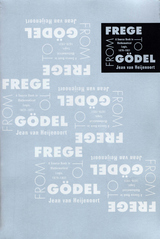
The fundamental texts of the great classical period in modern logic, some of them never before available in English translation, are here gathered together for the first time. Modern logic, heralded by Leibniz, may be said to have been initiated by Boole, De Morgan, and Jevons, but it was the publication in 1879 of Gottlob Frege’s Begriffsschrift that opened a great epoch in the history of logic by presenting, in full-fledged form, the propositional calculus and quantification theory.
Frege’s book, translated in its entirety, begins the present volume. The emergence of two new fields, set theory and foundations of mathematics, on the borders of logic, mathematics, and philosophy, is depicted by the texts that follow. Peano and Dedekind illustrate the trend that led to Principia Mathematica. Burali-Forti, Cantor, Russell, Richard, and König mark the appearance of the modern paradoxes. Hilbert, Russell, and Zermelo show various ways of overcoming these paradoxes and initiate, respectively, proof theory, the theory of types, and axiomatic set theory. Skolem generalizes Löwenheim’s theorem, and he and Fraenkel amend Zermelo’s axiomatization of set theory, while von Neumann offers a somewhat different system. The controversy between Hubert and Brouwer during the twenties is presented in papers of theirs and in others by Weyl, Bernays, Ackermann, and Kolmogorov. The volume concludes with papers by Herbrand and by Gödel, including the latter’s famous incompleteness paper.
Of the forty-five contributions here collected all but five are presented in extenso. Those not originally written in English have been translated with exemplary care and exactness; the translators are themselves mathematical logicians as well as skilled interpreters of sometimes obscure texts. Each paper is introduced by a note that sets it in perspective, explains its importance, and points out difficulties in interpretation. Editorial comments and footnotes are interpolated where needed, and an extensive bibliography is included.

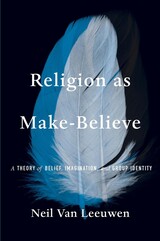
To understand the nature of religious belief, we must look at how our minds process the world of imagination and make-believe.
We often assume that religious beliefs are no different in kind from ordinary factual beliefs—that believing in the existence of God or of supernatural entities that hear our prayers is akin to believing that May comes before June. Neil Van Leeuwen shows that, in fact, these two forms of belief are strikingly different. Our brains do not process religious beliefs like they do beliefs concerning mundane reality; instead, empirical findings show that religious beliefs function like the imaginings that guide make-believe play.
Van Leeuwen argues that religious belief—which he terms religious “credence”—is best understood as a form of imagination that people use to define the identity of their group and express the values they hold sacred. When a person pretends, they navigate the world by consulting two maps: the first represents mundane reality, and the second superimposes the features of the imagined world atop the first. Drawing on psychological, linguistic, and anthropological evidence, Van Leeuwen posits that religious communities operate in much the same way, consulting a factual-belief map that represents ordinary objects and events and a religious-credence map that accords these objects and events imagined sacred and supernatural significance.
It is hardly controversial to suggest that religion has a social function, but Religion as Make-Believe breaks new ground by theorizing the underlying cognitive mechanisms. Once we recognize that our minds process factual and religious beliefs in fundamentally different ways, we can gain deeper understanding of the complex individual and group psychology of religious faith.



Seachanges brings together original essays examining human and cultural mobility from a musical perspective. Musicians have always been migratory frontrunners, and musical encounters have always generated nodes of cultural complexity. But hearing past musicking that took place in diaspora and foreign lands requires new methodologies designed to center unsettled lives and ephemeral practices in history.
Employing interpretive strategies from musicology, ethnomusicology, historical performance practice, sociolinguistics, and cultural history, the contributors intentionally complicate national and regional accounts of music from 1550 to 1800. Repertorial subjects include Spanish guitar music in Italy, Italian songs in Bohemia, Turkish songs in France, Jewish rituals on Corfu, Jesuit hymns in the Greek Archipelago, and Ottoman court music; further chapters recover the experiences of Indigenous musicians in colonial Latin America, the diaspora of Neapolitan singers, fictional cartographies of Baroque opera, and the careers of enslaved Black musicians in Venice and pre-revolutionary Haiti. They promote a new theoretical vocabulary that coalesces around orality, voice, performers, and performance as matters to foreground in mobility studies.
Seachanges illustrates how musical microhistories can address mobility at the macro level of Mediterranean and Atlantic Studies while respecting the tempo of individual human lives and musical timeframes.
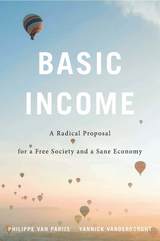
“Powerful as well as highly engaging—a brilliant book.”
—Amartya Sen
A Times Higher Education Book of the Week
It may sound crazy to pay people whether or not they’re working or even looking for work. But the idea of providing an unconditional basic income to everyone, rich or poor, active or inactive, has long been advocated by such major thinkers as Thomas Paine, John Stuart Mill, and John Kenneth Galbraith. Now, with the traditional welfare state creaking under pressure, it has become one of the most widely debated social policy proposals in the world. Basic Income presents the most acute and fullest defense of this radical idea, and makes the case that it is our most realistic hope for addressing economic insecurity and social exclusion.
“They have set forth, clearly and comprehensively, what is probably the best case to be made today for this form of economic and social policy.”
—Benjamin M. Friedman, New York Review of Books
“A rigorous analysis of the many arguments for and against a universal basic income, offering a road map for future researchers.”
—Wall Street Journal
“What Van Parijs and Vanderborght bring to this topic is a deep understanding, an enduring passion and a disarming optimism.”
—Steven Pearlstein, Washington Post
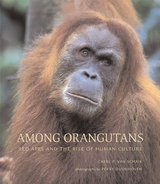
The local people know him as the "Man of the Forest," who refused to speak for fear of being put to work. And indeed the bear-like Sumatran orangutan, with his moon face, lanky arms, and shaggy red hair, does seem uncannily human; one of our closest relatives in the animal kingdom, the orangutan may have much to tell us about the origins of human intelligence, technology, and culture. In this book one of the world's leading experts on Sumatran orangutans, working in collaboration with nature photographer Perry van Duijnhoven, takes us deep into the disappearing world of these captivating primates.
In a narrative that is part adventure, part field journal, part call to conscience, Carel van Schaik introduces us to the colorful characters and complex lives of the orangutans who inhabit the vanishing forests of Sumatra. In compelling words and pictures, we come to know the personalities and temperaments of our primate cousins as they go about their days: building double-decker tree nests; using leaves as napkins, gloves, rain hats, and blankets, and sticks as backscratchers and probes; nurturing their infants longer and more intensely than any other nonhuman mammal. Here are the births and deaths, the first use of a tool, the defeat of a rival, the gradual loss of influence that, while fascinating to observe, may also help us to reconstruct human evolution.
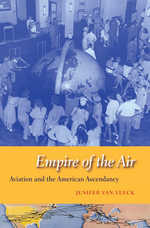
From the flights of the Wright brothers through the mass journeys of the jet age, airplanes inspired Americans to reimagine their nation’s place within the world. Now, Jenifer Van Vleck reveals the central role commercial aviation played in the United States’ rise to global preeminence in the twentieth century. As U.S. military and economic influence grew, the federal government partnered with the aviation industry to carry and deliver American power across the globe and to sell the very idea of the “American Century” to the public at home and abroad.
Invented on American soil and widely viewed as a symbol of national greatness, the airplane promised to extend the frontiers of the United States “to infinity,” as Pan American World Airways president Juan Trippe said. As it accelerated the global circulation of U.S. capital, consumer goods, technologies, weapons, popular culture, and expertise, few places remained distant from the influence of Wall Street and Washington. Aviation promised to secure a new type of empire—an empire of the air instead of the land, which emphasized access to markets rather than the conquest of territory and made the entire world America’s sphere of influence.
By the late 1960s, however, foreign airlines and governments were challenging America’s control of global airways, and the domestic aviation industry hit turbulent times. Just as the history of commercial aviation helps to explain the ascendance of American power, its subsequent challenges reflect the limits and contradictions of the American Century.

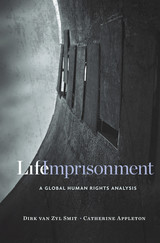
Life imprisonment has replaced capital punishment as the most common sentence imposed for heinous crimes worldwide. As a consequence, it has become the leading issue in international criminal justice reform. In the first global survey of prisoners serving life terms, Dirk van Zyl Smit and Catherine Appleton argue for a human rights–based reappraisal of this exceptionally harsh punishment. The authors estimate that nearly half a million people face life behind bars, and the number is growing as jurisdictions both abolish death sentences and impose life sentences more freely for crimes that would never have attracted capital punishment. Life Imprisonment explores this trend through systematic data collection and legal analysis, persuasively illustrated by detailed maps, charts, tables, and comprehensive statistical appendices.
The central question—can life sentences be just?—is straightforward, but the answer is complicated by the vast range of penal practices that fall under the umbrella of life imprisonment. Van Zyl Smit and Appleton contend that life imprisonment without possibility of parole can never be just. While they have some sympathy for the jurisprudence of the European Court of Human Rights, they conclude that life imprisonment, in many of the ways it is implemented worldwide, infringes on the requirements of justice. They also examine the outliers—states that have no life imprisonment—to highlight the possibility of abolishing life sentences entirely.
Life Imprisonment is an incomparable resource for lawyers, lawmakers, criminologists, policy scholars, and penal-reform advocates concerned with balancing justice and public safety.

This book deals with the history of the particular American religious sect which, because of its large and varied membership, its intellectual vigor, and the part played by its clergy in shaping public thought, affords the richest field for a study of the influence of religious organizations upon American life.
The story of the struggle of the Old School Presbyterian leaders to choose between their desire to avoid a break in their church and their feeling that it was their duty to voice their loyalty to the Union forms an interesting and illuminating commentary on the problems of the troublous times of the War of the Rebellion. The minor Presbyterian groups played varying parts, but always occupied more than their proportionate share of public attention because each met its own problems with a characteristically Presbyterian individuality.
Professor Vander Velde’s monograph is important not only for American religious history but also for the fact that it illustrates how closely Church and State were related during the Civil War period.

Perhaps the most important economic development of recent years has been the integration process engaged in by European countries. Today other groups of countries throughout the world either contemplate or have already undertaken similar courses of action. Although professional economists have already devoted much attention to the subject, considerable work remains to be done. The present study represents an attempt to advance our scientific knowledge in this direction.
This work is entirely theoretical and fully deductive. Its contribution lies both in the method used and in the conclusions reached. In contrast to most previous studies of customs unions and economic integration, exclusive use is made of general-equilibrium analysis. Because interpretation of mathematical results bearing on comparative statistics of suboptimal situations was found impossible, the author has depended wholly upon geometry. While the geometrical method does not allow inclusion of large numbers of variables, it often leads to, or at least intuitively suggests, important generalizations.
The findings, summarized in 107 points at the end of the study, can be classified in two distinct categories. On the one hand, a number of results are derived concerning the trade effects of international discrimination and customs unions—that is, the effects on the volumes of exports and imports and on relative international values. On the other hand, the more important portions of this work study the effects of customs unions on the welfare of the union, the welfare of the rest of the world, and the global efficiency of resource allocation in the world as a whole. Inter-country welfare comparisons and the use of cardinal utility indexes are entirely avoided. Rather, the author uses the concept of ordinal utility, and makes extensive use of utility-possibility analysis. With respect to the latter, the study of customs unions actually suggests a new method applicable to a wide range of other suboptimal situations in general equilibrium.

Travel in Tokugawa Japan was officially controlled by bakufu and domainal authorities via an elaborate system of barriers, or sekisho, and travel permits; commoners, however, found ways to circumvent these barriers, frequently ignoring the laws designed to control their mobility. In this study, Constantine Vaporis challenges the notion that this system of travel regulations prevented widespread travel, maintaining instead that a “culture of movement” in Japan developed in the Tokugawa era.
Using a combination of governmental documentation and travel literature, diaries, and wood-block prints, Vaporis examines the development of travel as recreation; he discusses the impact of pilgrimage and the institutionalization of alms-giving on the freedom of movement commoners enjoyed. By the end of the Tokugawa era, the popular nature of travel and a sophisticated system of roads were well established. Vaporis explores the reluctance of the bakufu to enforce its travel laws, and in doing so, beautifully evokes the character of the journey through Tokugawa Japan.

When a master novelist, essayist, and critic searches for the wellsprings of his own work, where does he turn? Mario Vargas Llosa—Peruvian writer, presidential contender, and public intellectual—answers this most personal question with elegant concision in this collection of essays. In “Four Centuries of Don Quixote,” he revisits the quintessential Spanish novel—a fiction about fiction whose ebullient prose still questions the certainties of our stumbling ideals. In recounting his illicit, delicious discovery of Borges’ fiction—“the most important thing to happen to imaginative writing in the Spanish language in modern times”—Vargas Llosa stands in for a generation of Latin American novelists who were liberated from their sense of isolation and inferiority by this Argentinean master of the European tradition.
In a nuanced appreciation of Ortega y Gasset, Vargas Llosa recovers the democratic liberalism of a misunderstood radical—a mid-century political philosopher on a par with Sartre and Russell, ignored because “he was only a Spaniard.” And in essays on the influence of Karl Popper and Isaiah Berlin, the author finds an antidote to the poisonous well of fanaticism in its many modern forms, from socialist utopianism and nationalism to religious fundamentalism. From these essays a picture emerges of a writer for whom the enchantment of literature awakens a critical gaze on the turbulent world in which we live.

Ancient Roman word lore.
Varro (M. Terentius), 116–27 BC, of Reate, renowned for his vast learning, was an antiquarian, historian, philologist, student of science, agriculturist, and poet. He was a republican who was reconciled to Julius Caesar and was marked out by him to supervise an intended national library.
Of Varro’s more than seventy works involving hundreds of volumes we have only his treatise On Agriculture (in LCL 283) and part of his monumental achievement De Lingua Latina (On the Latin Language), a work typical of its author’s interest not only in antiquarian matters but also in the collection of scientific facts. Originally it consisted of twenty-five books in three parts: etymology of Latin words (Books 1–7); their inflections and other changes (Books 8–13); and syntax (Books 14–25). Of the whole work survive (somewhat imperfectly) Books 5–10. These are from the section (Books 4–6) that applied etymology to words of time and place and to poetic expressions; the section (Books 7–9) on analogy as it occurs in word formation; and the section (Books 10–12) that applied analogy to word derivation. Varro’s work contains much that is of very great value to the study of the Latin language.
The Loeb Classical Library edition of On the Latin Language is in two volumes.

Ancient Roman word lore.
Varro (M. Terentius), 116–27 BC, of Reate, renowned for his vast learning, was an antiquarian, historian, philologist, student of science, agriculturist, and poet. He was a republican who was reconciled to Julius Caesar and was marked out by him to supervise an intended national library.
Of Varro’s more than seventy works involving hundreds of volumes we have only his treatise On Agriculture (in LCL 283) and part of his monumental achievement De Lingua Latina (On the Latin Language), a work typical of its author’s interest not only in antiquarian matters but also in the collection of scientific facts. Originally it consisted of twenty-five books in three parts: etymology of Latin words (Books 1–7); their inflections and other changes (Books 8–13); and syntax (Books 14–25). Of the whole work survive (somewhat imperfectly) Books 5–10. These are from the section (Books 4–6) that applied etymology to words of time and place and to poetic expressions; the section (Books 7–9) on analogy as it occurs in word formation; and the section (Books 10–12) that applied analogy to word derivation. Varro’s work contains much that is of very great value to the study of the Latin language.
The Loeb Classical Library edition of On the Latin Language is in two volumes.

Animal Cognition presents a clear, concise, and comprehensive overview of what we know about cognitive processes in animals. Focusing mainly on what has been learned from experimental research, Vauclair presents a wide-ranging review of studies of many kinds of animals--bees and wasps, cats and dogs, dolphins and sea otters, pigeons and titmice, baboons, chimpanzees, vervet monkeys, and Japanese macaques. He also offers a novel discussion of the ways Piaget's theory of cognitive development and Piagetian concepts may be used to develop models for the study of animal cognition.
Individual chapters review the current state of our knowledge about specific kinds of cognition in animals: tool use and spatial and temporal representations; social cognition--how animals manage their relational life and the cognitive organization that sustains social behaviors; representation, communication, and language; and imitation, self-recognition, and the theory of mind--what animals know about themselves. The book closes with Vauclair's "agenda for comparative cognition." Here he examines the relationship of the experimental approach to other fields and methods of inquiry, such as cognitive ethology and the ecological approach to species comparisons. It is here, too, that Vauclair addresses the key issue of continuity, or its absence, between animal and human cognition.
Given our still limited knowledge of cognitive systems in animals, Vauclair argues, researchers should be less concerned with the "why" question--the evolutionary or ecological explanations for differences in cognition between the species--and more concerned with the "what"--the careful work that is needed to increase our understanding of similarities and differences in cognitive processes. This thoughtful and lively book will be of great value to students of animal behavior and to anyone who desires a better understanding of humankind's relations to other living creatures.
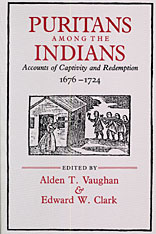
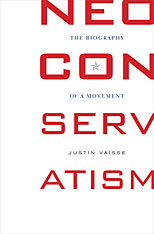
Neoconservatism has undergone a transformation that has made a clear identity almost impossible to capture. The Republican foreign policy operatives of the George W. Bush era seem far removed from the early liberal intellectuals who focused on domestic issues. Justin Vaïsse offers the first comprehensive history of neoconservatism, exploring the connections between a changing and multifaceted school of thought, a loose network of thinkers and activists, and American political life in turbulent times.
In an insightful portrait of the neoconservatives and their impact on public life, Vaïsse frames the movement in three distinct ages: the New York intellectuals who reacted against the 1960s leftists; the “Scoop Jackson Democrats,” who tried to preserve a mix of hawkish anticommunism abroad and social progress at home but failed to recapture the soul of the Democratic Party; and the “Neocons” of the 1990s and 2000s, who are no longer either liberals or Democrats. He covers neglected figures of this history such as Pat Moynihan, Eugene Rostow, Lane Kirkland, and Bayard Rustin, and offers new historical insight into two largely overlooked organizations, the Coalition for a Democratic Majority and the Committee on the Present Danger. He illuminates core developments, including the split of liberalism in the 1960s, and the shifting relationship between partisan affiliation and foreign policy positions.
Vaïsse gives neoconservatism its due as a complex movement and predicts it will remain an influential force in the American political landscape.
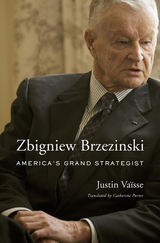
As National Security Adviser to President Jimmy Carter, Zbigniew Brzezinski (1928–2017) guided U.S. foreign policy at a critical juncture of the Cold War. But his impact on America’s role in the world extends far beyond his years in the White House, and reverberates to this day. His geopolitical vision, scholarly writings, frequent media appearances, and policy advice to decades of presidents from Lyndon Johnson to Barack Obama made him America’s grand strategist, a mantle only Henry Kissinger could also claim.
Both men emigrated from turbulent Europe in 1938 and got their Ph.D.s in the 1950s from Harvard, then the epitome of the Cold War university. With its rise to global responsibilities, the United States needed professionals. Ambitious academics like Brzezinski soon replaced the old establishment figures who had mired the country in Vietnam, and they transformed the way America conducted foreign policy.
Justin Vaïsse offers the first biography of the successful immigrant who completed a remarkable journey from his native Poland to the White House, interacting with influential world leaders from Gloria Steinem to Deng Xiaoping to John Paul II. This complex intellectual portrait reveals a man who weighed in on all major foreign policy debates since the 1950s, from his hawkish stance on the USSR to his advocacy for the Middle East peace process and his support for a U.S.-China global partnership. Through its examination of Brzezinski’s statesmanship and comprehensive vision, Zbigniew Brzezinski raises important questions about the respective roles of ideas and identity in foreign policy.

From prescriptions to pain killers to transplantation of human organs, the perplexities of medical ethics extend far beyond the confines of medicine. This book offers over 100 engrossing case studies that guide the reader to an understanding of the ethical aspects of medical care. The cases illustrate dilemmas arising in everyday practice—what to tell a dying patient, selecting a surgical approach, choosing between brand-name and generic drugs—as well as the ethical consequences of advanced technology—prenatal diagnosis that might result in the decision to abort, or keeping an irreversibly comatose patient alive with support methods.
Robert M. Veatch first shows readers how to identify ethical issues and points out that an important element in making a decision is to identify the person responsible for it. Then, in analyzing the classical moral question "What is the right thing to do?" he cites situations that were actually faced by patients and medical professionals. He explores a number of specific ethical problems in contemporary medicine: abortion, sterilization, contraception, transplantation, hemodialysis, genetic counseling, and human experimentation, among others. The last chapter focuses on death and dying.
Ethical positions are never forced upon the reader. Instead, the author is careful to present alternatives and to discuss the consequences of a particular decision. His book is written for patients, their families and friends, nurses, technicians, counselors, social workers, physicians, employers, and lawyers—indeed for anyone affected by the burgeoning power of medical intervention.



An imperial historian and an emperor’s history.
Velleius Paterculus, who lived in the reigns of Augustus and Tiberius (30 BC–AD 37), served as a military tribune in Thrace, Macedonia, Greece, and Asia Minor, and later, from AD 4 to 12 or 13, as a cavalry officer and legatus in Germany and Pannonia. He was quaestor in AD 7, praetor in 15. He wrote in two books “Roman Histories,” a summary of Roman history from the fall of Troy to AD 29. As he approached his own times he becomes much fuller in his treatment, especially between the death of Caesar in 44 BC and that of Augustus in AD 14. His work has useful concise essays on Roman colonies and provinces and some effective compressed portrayals of characters.
Res Gestae Divi Augusti. In his 76th year (AD 13–14) the emperor Augustus wrote a dignified account of his public life and work of which the best preserved copy (with a Greek translation) was engraved by the Galatians on the walls of the temple of Augustus at Ancyra (Ankara). It is a unique document giving short details of his public offices and honors; his benefactions to the empire, to the people, and to the soldiers; and his services as a soldier and as an administrator.
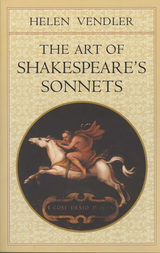
Helen Vendler, widely regarded as our most accomplished interpreter of poetry, here serves as an incomparable guide to some of the best-loved poems in the English language.
In detailed commentaries on Shakespeare’s 154 sonnets, Vendler reveals previously unperceived imaginative and stylistic features of the poems, pointing out not only new levels of import in particular lines, but also the ways in which the four parts of each sonnet work together to enact emotion and create dynamic effect. The commentaries—presented alongside the original and modernized texts—offer fresh perspectives on the individual poems, and, taken together, provide a full picture of Shakespeare’s techniques as a working poet. With the help of Vendler’s acute eye, we gain an appreciation of “Shakespeare’s elated variety of invention, his ironic capacity, his astonishing refinement of technique, and, above all, the reach of his skeptical imaginative intent.”
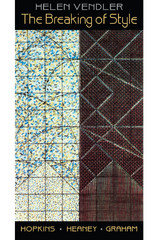
Style is the material body of lyric poetry, Helen Vendler suggests. To cast off an earlier style is to do an act of violence to the self. Why might a poet do this, adopting a sharply different form? In this exploration of three kinds of break in poetic style, Vendler clarifies the essential connection between style and substance in poetry. Opening fresh perspectives on the work of three very different poets, her masterful study of changes in style yields a new view of the interplay of moral, emotional, and intellectual forces in a poet’s work.
Gerard Manley Hopkins’ invention of sprung rhythm marks a dramatic break with his early style. Rhythm, Vendler shows us, is at the heart of Hopkins’ aesthetic, and sprung rhythm is his symbol for danger, difference, and the shock of the beautiful. In Seamus Heaney’s work, she identifies clear shifts in grammatical “atmosphere” from one poem to the next—from “nounness” to the “betweenness” of an adverbial style—shifts whose moral and political implications come under scrutiny here. And finally Vendler looks at Jorie Graham’s departure from short lines to numbered lines to squared long lines of sentences, marking a move from deliberation to cinematic “freeze-framing to coverage, each with its own meaning in this poet’s career.
Throughout, Vendler reminds us that what distinguishes successful poetry is a mastery of language at all levels—including the rhythmic, the grammatical, and the graphic. A fine study of three poets and a superb exposition of the craft of poetry, The Breaking of Style revives our lapsed sense of what style means.
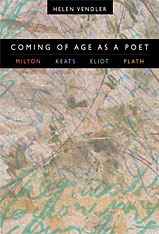
To find a personal style is, for a writer, to become adult; and to write one’s first “perfect” poem—a poem that wholly and successfully embodies that style—is to come of age as a poet. By looking at the precedents, circumstances, and artistry of the first perfect poems composed by John Milton, John Keats, T. S. Eliot, and Sylvia Plath, Coming of Age as a Poet offers rare insight into this mysterious process, and into the indispensable period of learning and experimentation that precedes such poetic achievement.
Milton’s L’Allegro, Keats’s On First Looking into Chapman’s Homer, Eliot’s The Love Song of J. Alfred Prufrock, and Plath’s The Colossus are the poems that Helen Vendler considers, exploring each as an accession to poetic confidence, mastery, and maturity. In meticulous and sympathetic readings of the poems, and with reference to earlier youthful compositions, she delineates the context and the terms of each poet’s self-discovery—and illuminates the private, intense, and ultimately heroic effort and endurance that precede the creation of any memorable poem.
With characteristic precision, authority, and grace, Vendler helps us to appreciate anew the conception and the practice of poetry, and to observe at first hand the living organism that breathes through the words of a great poem.

Join Professor Helen Vendler in her course lecture on the Yeats poem "Among School Children". View her insightful and passionate analysis along with a condensed reading and student comments on the course.
How does a poet repeatedly make art over a lifetime out of an arbitrary assignment of fate? By asking this question of the work of four American poets--two men of the postwar generation, two young women writing today--Helen Vendler suggests a fruitful way of looking at a poet's career and a new way of understanding poetic strategies as both mastery of forms and forms of mastery.
Fate hands every poet certain unavoidable "givens." Of the poets Vendler studies, Robert Lowell sprang from a family famous in American and especially New England history; John Berryman found himself an alcoholic manic-depressive; Rita Dove was born black; Jorie Graham grew up trilingual, with three words for every object. In Vendler's readings, we see how these poets return again and again to the problems set out by their givens, and how each invents complex ways, both thematic and formal, of making poetry out of fate.
Compelling for its insights into the work of four notable poets, this book by a leading critic of poetry is also invaluable for what it has to tell us about the poetic process--about how art copes with the obdurate givens of life, and about the conflict in art between the whim of fate and the artist's will to choose.

Join Professor Helen Vendler in her course lecture on the Yeats poem "Among School Children". View her insightful and passionate analysis along with a condensed reading and student comments on the course.
The poetry collected in this volume reveals the range and power of the contemporary American imagination. The verve, freedom, and boldness of American English are combined with the new harmonies of modern cadence. Here are distillations of twentieth-century perception, feeling, and thought, and reflections of changing social realities, scientific and psychoanalytic insights, and the strong voices of feminism and black consciousness. This is a book for those who value fresh and original poetry and for readers worldwide who are curious about contemporary American experience.
Helen Vendler relies on her own taste and judgment in singling out excellent poems, beginning with the late modernist flowering of Wallace Stevens and continuing to the present. Her wide-ranging Introduction places recent American poetry in its aesthetic and social contexts. The anthology provides an extensive offering of the work of major poets and introduces many writers who are only now beginning to make their reputation. Thirty-five poets are included, with a representative selection from the earlier to later work of each and a significant number of long poems. Brief biographies of the poets are appended.
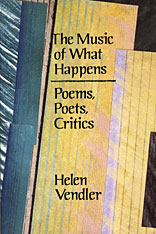
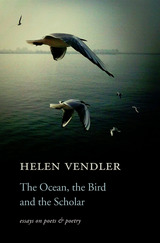
A Times Higher Education Book of the Week
One of our foremost commentators on poetry examines the work of a broad range of nineteenth- and twentieth-century English, Irish, and American poets. The Ocean, the Bird, and the Scholar gathers two decades’ worth of Helen Vendler’s essays, book reviews, and occasional prose—including the 2004 Jefferson Lecture—in a single volume.
“It’s one of [Vendler’s] finest books, an impressive summation of a long, distinguished career in which she revisits many of the poets she has venerated over a lifetime and written about previously. Reading it, one can feel her happiness in doing what she loves best. There is scarcely a page in the book where there isn’t a fresh insight about a poet or poetry.”
—Charles Simic, New York Review of Books
“Vendler has done perhaps more than any other living critic to shape—I might almost say ‘create’—our understanding of poetry in English.”
—Joel Brouwer, New York Times Book Review
“Poems are artifacts and [Vendler] shows us, often thrillingly, how those poems she considers the best specimens are made…A reader feels that she has thoroughly absorbed her subjects and conveys her understanding with candor, clarity, wit.”
—John Greening, Times Literary Supplement

Helen Vendler widens her exploration of lyric poetry with a new assessment of the six great odes of John Keats and in the process gives us, implicitly, a reading of Keats’s whole career. She proposes that these poems, usually read separately, are imperfectly seen unless seen together—that they form a sequence in which Keats pursued a strict and profound inquiry into questions of language, philosophy, and aesthetics.
Vendler describes a Keats far more intellectually intent on creating an aesthetic, and on investigating poetic means, than we have yet seen, a Keats inquiring into the proper objects of worship for man, the process of soul making, the female Muse, the function of aesthetic reverie, and the ontological nature of the work of art. We see him questioning the admissibility of ancient mythology in a post Enlightenment art, the hierarchy of the arts, the role of the passions in art, and the rival claims of abstraction and representation. In formal terms, he investigates in the odes the appropriateness of various lyric structures. And in debating the value to poetry of the languages of personification, mythology, philosophical discourse, and trompe l’oeil description, Keats more and more clearly distinguishes the social role of lyric from those of painting, philosophy, or myth.
Like Vendler’s previous work on Yeats, Stevens, and Herbert, this finely conceived volume suggests that lyric poetry is best understood when many forms of inquiry—thematic, linguistic, historical, psychological, and structural—are brought to bear on it at once.
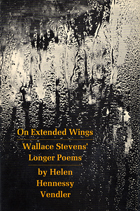
Though Wallace Stevens’ shorter poems are perhaps his best known, his longer poems, Helen Vendler suggests in this book, deserve equal fame and equal consideration. Stevens’ central theme—the worth of the imagination—remained with him all his life, and Mrs. Vendler therefore proposes that his development as a poet can best be seen, not in description—which must be repetitive—of the abstract bases of his work, but rather in a view of his changing styles.
The author presents here a chronological account of fourteen longer poems that span a thirty-year period, showing, through Stevens’ experiments in genre, diction, syntax, voice, imagery, and meter, the inventive variety of Stevens’s work in long forms, and providing at the same time a coherent reading of these difficult poems. She concludes, “Stevens was engaged in constant experimentation all his life in an attempt to find the appropriate vehicle for his expansive consciousness; he found it in his later long poems, which surpass in value the rest of his work.”
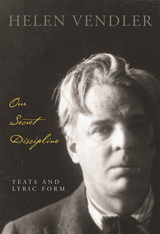
The fundamental difference between rhetoric and poetry, according to Yeats, is that rhetoric is the expression of one’s quarrels with others while poetry is the expression (and sometimes the resolution) of one’s quarrel with oneself. This is where Helen Vendler’s Our Secret Discipline begins. Through exquisite attention to outer and inner forms, Vendler explores the most inventive reaches of the poet’s mind. This book is a space-clearing gesture, an attempt to write about lyric forms in Yeats in unprecedented and comprehensive ways. The secret discipline of the poet is his vigilant attention to forms—whether generic, structural, or metrical. Yeats explores the potential of such forms to give shape and local habitation to volatile thoughts and feelings.
Helen Vendler remains focused on questions of singular importance: Why did Yeats cast his poems into the widely differing forms they ultimately took? Can we understand Yeats’s poetry better if we pay attention to inner and outer lyric form? Chapters of the book take up many Yeatsian ventures, such as the sonnet, the lyric sequence, paired poems, blank verse, and others. With elegance and precision, Vendler offers brilliant insights into the creative process and speculates on Yeats’s aims as he writes and rewrites some of the most famous poems in modern literature.
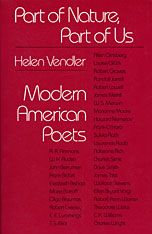

The transparent beauty and effortless grace of George Herbert's poetry have made it seem almost devoid of art. In this comprehensive reading of Herbert, Helen Vendler reveals the complexity inherent in the apparent simplicity of his lyrics. Herbert appears here, both in introspective and in devotional verse, as a poet of universal feeling whose work can be given a human interpretation independent of any religious conviction.
Very nearly all of Herbert's poems are treated in this finely written, forcefully argued study. By looking at the poet's less successful attempts as well as at his best work, Vendler is able to trace his surest line of development in the various modes and forms in which he worked. Comparisons with the work of his adapters and imitators make apparent the perfection and finish of his lines, their interior intellectual and psychological harmony.
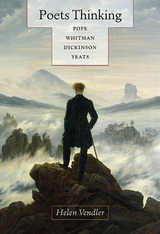
Poetry has often been considered an irrational genre, more expressive than logical, more meditative than given to coherent argument. And yet, in each of the four very different poets she considers here, Helen Vendler reveals a style of thinking in operation; although they may prefer different means, she argues, all poets of any value are thinkers.
The four poets taken up in this volume—Alexander Pope, Walt Whitman, Emily Dickinson, and William Butler Yeats—come from three centuries and three nations, and their styles of thinking are characteristically idiosyncratic. Vendler shows us Pope performing as a satiric miniaturizer, remaking in verse the form of the essay, Whitman writing as a poet of repetitive insistence for whom thinking must be followed by rethinking, Dickinson experimenting with plot to characterize life’s unfolding, and Yeats thinking in images, using montage in lieu of argument.
With customary lucidity and spirit, Vendler traces through these poets’ lines to find evidence of thought in lyric, the silent stylistic measures representing changes of mind, the condensed power of poetic thinking. Her work argues against the reduction of poetry to its (frequently well-worn) themes and demonstrates, instead, that there is always in admirable poetry a strenuous process of thinking, evident in an evolving style—however ancient the theme—that is powerful and original.

Poet and critic are well met, as one of our best writers on poetry takes up one of the world’s great poets.
Where other books on the Nobel laureate Seamus Heaney have dwelt chiefly on the biographical, geographical, and political aspects of his writing, this book looks squarely and deeply at Heaney’s poetry as art. A reading of the poet’s development over the past thirty years, Seamus Heaney tells a story of poetic inventiveness, of ongoing experimentation in form and expression. It is an inspired and nuanced portrait of an Irish poet of public as well as private life, whose work has given voice to his troubled times.
With characteristic discernment and eloquence, Helen Vendler traces Heaney’s invention as it evolves from his beginnings in Death of a Naturalist (1966) through his most recent volume, The Spirit Level (1996). In sections entitled “Second Thoughts,” she considers an often neglected but crucial part of Heaney’s evolving talent: self-revision. Here we see how later poems return to the themes or genres of the earlier volumes, and reconceive them in light of the poet’s later attitudes or techniques. Vendler surveys all of Heaney’s efforts in the classical forms—genre scene, elegy, sonnet, parable, confessional poem, poem of perception—and brings to light his aesthetic and moral attitudes.
Seamus Heaney’s development as a poet is inextricably connected to the violent struggle that has racked Northern Ireland. Vendler shows how, from one volume to the next, Heaney has maintained vigilant attention toward finding a language for his time—“symbols adequate for our predicament,” as he has said. The worldwide response to those discovered symbols suggests that their relevance extends far beyond this moment.
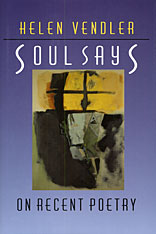
Join Professor Helen Vendler in her course lecture on the Yeats poem "Among School Children". View her insightful and passionate analysis along with a condensed reading and student comments on the course.
To know the poetry of our time, to look through its lenses and filters, is to see our lives illuminated. In these eloquent essays on recent American, British, and Irish poetry, Helen Vendler shows us contemporary life and culture captured in lyric form by some of our most celebrated poets. An incomparable reader of poetry, Vendler explains its power; it is, she says, the voice of the soul rather than the socially marked self speaking directly to us through the stylization of verse. "Soul Says," the title of a poem by Jorie Graham, is thus the name of this collection. In essays on Seamus Heaney, Donald Davie, Allen Ginsberg, John Ashbery, Rita Dove, Jorie Graham, and others, Vendler makes difficult poetry accessible. She reveals the idiosyncratic nature of lyric form, and points out the artistic choices present in even the simplest texts. Vendler examines the use of abstraction in lyric poems; considers what readers seek and receive from verse; describes the role of such stylistic devices as compression, structural dynamics, and syntactic ordering; and renders a wide variety of poetic styles meaningful. Through her perceptive eyes we see how lyric poetry, speaking with natural musicality and rhythm, can by arrangement, pacing, metaphor, and tone create symbol from fact-and fill us with new understanding. In these direct and engaged commentaries, she explores the force, beauty, and intellectual complexity of contemporary lyric verse.


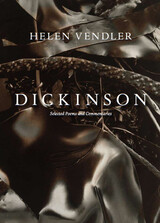
Seamus Heaney, Denis Donoghue, William Pritchard, Marilyn Butler, Harold Bloom, and many others have praised Helen Vendler as one of the most attentive readers of poetry. Here, Vendler turns her illuminating skills as a critic to 150 selected poems of Emily Dickinson. As she did in The Art of Shakespeare’s Sonnets, she serves as an incomparable guide, considering both stylistic and imaginative features of the poems.
In selecting these poems for commentary Vendler chooses to exhibit many aspects of Dickinson’s work as a poet, “from her first-person poems to the poems of grand abstraction, from her ecstatic verses to her unparalleled depictions of emotional numbness, from her comic anecdotes to her painful poems of aftermath.” Included here are many expected favorites as well as more complex and less often anthologized poems. Taken together, Vendler’s selection reveals Emily Dickinson’s development as a poet, her astonishing range, and her revelation of what Wordsworth called “the history and science of feeling.”
In accompanying commentaries Vendler offers a deeper acquaintance with Dickinson the writer, “the inventive conceiver and linguistic shaper of her perennial themes.” All of Dickinson’s preoccupations—death, religion, love, the natural world, the nature of thought—are explored here in detail, but Vendler always takes care to emphasize the poet’s startling imagination and the ingenuity of her linguistic invention. Whether exploring less familiar poems or favorites we thought we knew, Vendler reveals Dickinson as “a master” of a revolutionary verse-language of immediacy and power. Dickinson: Selected Poems and Commentaries will be an indispensable reference work for students of Dickinson and readers of lyric poetry.
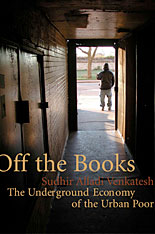
In this revelatory book, Sudhir Venkatesh takes us into Maquis Park, a poor black neighborhood on Chicago’s Southside, to explore the desperate, dangerous, and remarkable ways in which a community survives. We find there an entire world of unregulated, unreported, and untaxed work, a system of living off the books that is daily life in the ghetto. From women who clean houses and prepare lunches for the local hospital to small-scale entrepreneurs like the mechanic who works in an alley; from the preacher who provides mediation services to the salon owner who rents her store out for gambling parties; and from street vendors hawking socks and incense to the drug dealing and extortion of the local gang, we come to see how these activities form the backbone of the ghetto economy.
What emerges are the innumerable ways that these men and women, immersed in their shadowy economic pursuits, are connected to and reliant upon one another. The underground economy, as Venkatesh’s subtle storytelling reveals, functions as an intricate web, and in the strength of its strands lie the fates of many Maquis Park residents. The result is a dramatic narrative of individuals at work, and a rich portrait of a community. But while excavating the efforts of men and women to generate a basic livelihood for themselves and their families, Off the Books offers a devastating critique of the entrenched poverty that we so often ignore in America, and reveals how the underground economy is an inevitable response to the ghetto’s appalling isolation from the rest of the country.
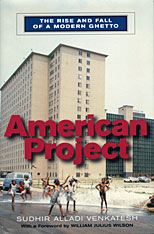
High-rise public housing developments were signature features of the post–World War II city. A hopeful experiment in providing temporary, inexpensive housing for all Americans, the "projects" soon became synonymous with the black urban poor, with isolation and overcrowding, with drugs, gang violence, and neglect. As the wrecking ball brings down some of these concrete monoliths, Sudhir Venkatesh seeks to reexamine public housing from the inside out, and to salvage its troubled legacy. Based on nearly a decade of fieldwork in Chicago's Robert Taylor Homes, American Project is the first comprehensive story of daily life in an American public housing complex.
Venkatesh draws on his relationships with tenants, gang members, police officers, and local organizations to offer an intimate portrait of an inner-city community that journalists and the public have only viewed from a distance. Challenging the conventional notion of public housing as a failure, this startling book re-creates tenants' thirty-year effort to build a safe and secure neighborhood: their political battles for services from an indifferent city bureaucracy, their daily confrontation with entrenched poverty, their painful decisions about whether to work with or against the street gangs whose drug dealing both sustained and imperiled their lives.
American Project explores the fundamental question of what makes a community viable. In his chronicle of tenants' political and personal struggles to create a decent place to live, Venkatesh brings us to the heart of the matter.
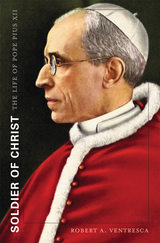
Debates over the legacy of Pope Pius XII and his canonization are so heated they are known as the “Pius wars.” Soldier of Christ moves beyond competing caricatures and considers Pius XII as Eugenio Pacelli, a flawed and gifted man. While offering insight into the pope’s response to Nazism, Robert A. Ventresca argues that it was the Cold War and Pius XII’s manner of engaging with the modern world that defined his pontificate.
Laying the groundwork for the pope’s controversial, contradictory actions from 1939 to 1958, Ventresca begins with the story of Pacelli’s Roman upbringing, his intellectual formation in Rome’s seminaries, and his interwar experience as papal diplomat and Vatican secretary of state. Accused of moral equivocation during the Holocaust, Pius XII later fought the spread of Communism in Western Europe, spoke against the persecution of Catholics in Eastern Europe and Asia, and tackled a range of social and political issues. By appointing the first indigenous cardinals from China and India and expanding missions in Africa while expressing solidarity with independence movements, he internationalized the church’s membership and moved Catholicism beyond the colonial mentality of previous eras.
Drawing from a diversity of international sources, including unexplored documentation from the Vatican, Ventresca reveals a paradoxical figure: a prophetic reformer of limited vision whose leadership both stimulated the emergence of a global Catholicism and sowed doubt and dissension among some of the church’s most faithful servants.

Robert Venturi exploded onto the architectural scene in 1966 with a radical call to arms in Complexity and Contradiction. Further accolades and outrage ensued in 1972 when Venturi and Denise Scott Brown (along with Steven Izenour) analyzed the Las Vegas strip as an archetype in Learning from Las Vegas. Now, for the first time, these two observer-designer-theorists turn their iconoclastic vision onto their own remarkable partnership and the rule-breaking architecture it has informed.
The views of Venturi and Scott Brown have influenced architects worldwide for nearly half a century. Pluralism and multiculturalism; symbolism and iconography; popular culture and the everyday landscape; generic building and electronic communication are among the many ideas they have championed. Here, they present both a fascinating retrospective of their life work and a definitive statement of its theoretical underpinnings.
Accessible, informative, and beautifully illustrated, Architecture as Signs and Systems is a must for students of architecture and urban planning, as well as anyone intrigued by these seminal cultural figures. Venturi and Scott Brown have devoted their professional lives to broadening our view of the built world and enlarging the purview of practitioners within it. By looking backward over their own life work, they discover signs and systems that point forward, toward a humane Mannerist architecture for a complex, multicultural society.

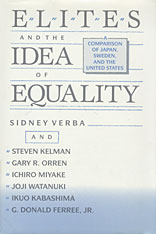
What equality means in three modern democracies, both to leaders of important groups and to challengers of the status quo, is the subject of this wide-ranging canvass of perceptions and policy. It is based on extensive questionnaire data gathered from leaders in various segments of society in each countrybusiness, labor unions, farm organizations, political parties, the media-as well as from groups that are seeking greater equalityfeminists, black leaders in the United States, leaders of the Burakumin in Japan. The authors describe the extent to which the same meanings of equality exist, both within and across nations, and locate the areas of consensus and conflict over equality. No other book has compared data of this sort for these purposes.
The authors address several major substantive and theoretical issues: the role of values in relation to egalitarian outcomes; the comparison of values and perceptions about equality in economics (income equality) and politics (equality of influence); and the difference among the nations in the ways political institutions affect the incorporation of new demands for equality into the policymaking process. They pay particular attention to how policy is set on issues of gender equality.
This book will be controversial, for some see no room in the understanding of political economy for the analysis of values. It will be consulted by a general audience interested in politics and culture as well as by social scientists. Elites and the Idea of Equality is an informative sequel to Equality in America by Sidney Verba and Gary R. Orren (Harvard University Press), which considers similar topics in a national context.

A model of meticulous and incisive scholarship, Equality in America dissects American attitudes toward equality by placing those beliefs in historical context and demonstrating a relationship between political and economic equality. The book is based on a study of leaders from all significant sectors of American society, including top business and labor leaders, those highest in the media and in political parties, and leaders from the feminist and civil rights movements.
The book takes on the thorny puzzle of how economic inequality, which is the inevitable result of a free economy, coexists with political equality, which is a necessary ingredient of democracy. In the course of their argument, the authors take issue with free market economists and Marxist analysts, both of whom treat self-interest as the driving force behind individual and collective behavior, leaving little place for the role of beliefs and values.
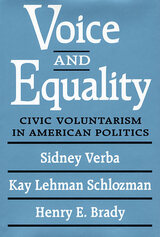
This book confirms Alexis de Tocqueville’s idea, dating back a century and a half, that American democracy is rooted in civil society. Citizens’ involvement in family, school, work, voluntary associations, and religion has a significant impact on their participation as voters, campaigners, donors, community activists, and protesters.
The authors focus on the central issues of involvement: how people come to be active and the issues they raise when they do. They find fascinating differences along cultural lines, among African-Americans, Latinos, and Anglo-Whites, as well as between the religiously observant and the secular. They observe family activism moving from generation to generation, and they look into the special role of issues that elicit involvement, including abortion rights and social welfare.
This far-reaching analysis, based on an original survey of 15,000 individuals, including 2,500 long personal interviews, shows that some individuals have a greater voice in politics than others, and that this inequality results not just from varying inclinations toward activity, but also from unequal access to vital resources such as education. Citizens’ voices are especially unequal when participation depends on contributions of money rather than contributions of time. This deeply researched study brilliantly illuminates the many facets of civic consciousness and action and confirms their quintessential role in American democracy.
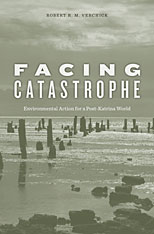
As Hurricane Katrina vividly revealed, disaster policy in the United States is broken and needs reform. What can we learn from past disasters—storms, floods, earthquakes, tsunamis, landslides, and wildfires—about preparing for and responding to future catastrophes? How can these lessons be applied in a future threatened by climate change?
In this bold contribution to environmental law, Robert Verchick argues for a new perspective on disaster law that is based on the principles of environmental protection. His prescription boils down to three simple commands: Go Green, Be Fair, and Keep Safe. “Going green” means minimizing exposure to hazards by preserving natural buffers and integrating those buffers into artificial systems like levees or seawalls. “Being fair” means looking after public health, safety, and the environment without increasing personal and social vulnerabilities. “Keeping safe” means a more cautionary approach when confronting disaster risks.
Verchick argues that government must assume a stronger regulatory role in managing natural infrastructure, distributional fairness, and public risk. He proposes changes to the federal statutes governing environmental impact assessments, wetlands development, air emissions, and flood control, among others. Making a strong case for more transparent governmental decision-making, Verchick offers a new vision of disaster law for the next generation.

Imperiled Destinies examines the evolution of Daoist beliefs about human liability and redemption over eight centuries and outlines ritual procedures for rescuing an ill‐starred destiny. From the second through the tenth century CE, Daoism emerged as a liturgical organization that engaged vigorously with Buddhism and transformed Chinese thinking about suffering, the nature of evil, and the aims of liberation. In the fifth century, elements of classical Daoism combined with Indian yogic practices to interiorize the quest for deliverance.
The medieval record portrays a world engulfed by evil, where human existence was mortgaged from birth and burdened by increasing debts and obligations in this world and the next. Against this gloomy outlook, Daoism offered ritual and sacramental instruments capable of acting on the unseen world, providing therapeutic relief and ecstatic release from apprehensions of death, disease, war, spoilt harvests, and loss. Drawing on prayer texts, liturgical sermons, and experiential narratives, Franciscus Verellen focuses on the Daoist vocabulary of bondage and redemption, the changing meanings of sacrifice, and metaphoric conceptualizations bridging the visible and invisible realms. The language of medieval supplicants envisaged the redemption of an imperiled destiny as debt forgiveness, and deliverance as healing, purification, release, or emergence from darkness into light.



Buddhism in medieval Korea is characterized as “State Protection Buddhism,” a religion whose primary purpose was to rally support (supernatural and popular) for and legitimate the state. In this view, the state used Buddhism to engender compliance with its goals. A closer look, however, reveals that Buddhism was a canvas on which people projected many religious and secular concerns and desires.
This study is an attempt to specify Buddhism’s place in Koryo and to ascertain to what extent and in what areas Buddhism functioned as a state religion. Was state support the main reason for Buddhism’s dominance in Koryo? How actively did the state seek to promote religious ideals? What was the strength of Buddhism as an institution and the nature of its relationship to the state? What role did Confucianism, the other state ideology, play in Koryo? This study argues that Buddhism provided most of the symbols and rituals, and some of the beliefs, that constructed an aura of legitimacy, but that there was no single ideological system underlying the Koryo dynasty’s legitimating strategies.
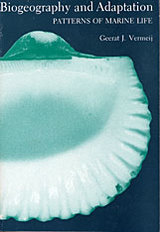

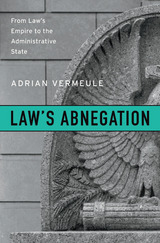
Ronald Dworkin once imagined law as an empire and judges as its princes. But over time, the arc of law has bent steadily toward deference to the administrative state. Adrian Vermeule argues that law has freely abandoned its imperial pretensions, and has done so for internal legal reasons.
In area after area, judges and lawyers, working out the logical implications of legal principles, have come to believe that administrators should be granted broad leeway to set policy, determine facts, interpret ambiguous statutes, and even define the boundaries of their own jurisdiction. Agencies have greater democratic legitimacy and technical competence to confront many issues than lawyers and judges do. And as the questions confronting the state involving climate change, terrorism, and biotechnology (to name a few) have become ever more complex, legal logic increasingly indicates that abnegation is the wisest course of action.
As Law’s Abnegation makes clear, the state did not shove law out of the way. The judiciary voluntarily relegated itself to the margins of power. The last and greatest triumph of legalism was to depose itself.

Coins are the one form of art to which every American is exposed, yet of art forms in the United States, coins have been the least respected and understood. This delightful volume, containing well over 400 illustrations, provides the first comprehensive aesthetic appreciation of the American series. Although frequently disparaged by the public, the series is unrivaled in aesthetic richness among modern coinages. It includes such masterpieces as the primitively beautiful coins of the struggling young republic, dignified Neoclassic designs which dominated the nineteenth century, and magnificent gold and silver commemorative medals designed by the leading sculptors of the early twentieth century.
The author traces the development of American coins through the 1960s, discussing their artistic merits, analyzing the influences of the popular arts upon their design, and tracing the inspirations of particular compositions and styles in the other arts, both European and American.


Here is a vividly written and fully illustrated assessment of the figured decoration on Late Bronze Age vessels from the Greek mainland, Cyprus, and the Aegean islands. It will become a standard source on the Mycenaean imagination.
Emily Vermeuele and Vassos Karageorghis describe the hunting scenes, chariots, sphinxes and griffins, bulls and birds, people dancing or fighting, and cult scenes on Mycenaean pottery. They analyze forms and styles, sources and influences, and the development of conventions. They relate what is known about the painters and their workshops, and the overseas trade. A catalogue of the 700 remaining whole and broken examples, now in museums around the world, is appended. Over 950 illustrations provide a comprehensive view of the art.
This study tells us much about Bronze Age civilization, and it opens the way to an understanding of the relationship of Greek art to figure drawing in pre-Classical times.

This sumptuous publication of the archaeological excavation in northwest Cyprus (1971–1973) is sponsored by Harvard University and the Museum of Fine Arts, Boston. The authors present the site, its objects, and its chronological and historical significance against the wider background of Cypriote archaeology, casting new light on the problems of Cypriote pottery classification and the links between Cyprus and the Aegean world, especially Crete. Descriptions of the Mound and Tombs and the catalogues of their contents are supplemented by essays on individual classes of objects.
The book is lavishly illustrated with detailed diagrams and nearly 2,000 photographs and drawings to help the reader understand this active industrial area and its changes through successive generations from the Middle Bronze Age to the Iron Age. An appendix of technical analyses, an inventory of the finds, a list of published references to the excavation, and a bibliography complete the documentation.
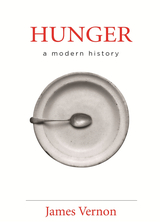
Hunger is as old as history itself. Indeed, it appears to be a timeless and inescapable biological condition. And yet perceptions of hunger and of the hungry have changed over time and differed from place to place. Hunger has a history, which can now be told.
At the beginning of the nineteenth century, hunger was viewed as an unavoidable natural phenomenon or as the fault of its lazy and morally flawed victims. By the middle of the twentieth century, a new understanding of hunger had taken root. Across the British Empire and beyond, humanitarian groups, political activists, social reformers, and nutritional scientists established that the hungry were innocent victims of political and economic forces outside their control. Hunger was now seen as a global social problem requiring government intervention in the form of welfare to aid the hungry at home and abroad. James Vernon captures this momentous shift as it occurred in imperial Britain over the past two centuries.
Rigorously researched, Hunger: A Modern History draws together social, cultural, and political history in a novel way, to show us how we came to have a moral, political, and social responsibility toward the hungry. Vernon forcefully reminds us how many perished from hunger in the empire and reveals how their history was intricately connected with the precarious achievements of the welfare state in Britain, as well as with the development of international institutions, such as the United Nations, committed to the conquest of world hunger. All those moved by the plight of the hungry will want to read this compelling book.

In the past decade remarkable changes have taken place in the relations between big business and government in Western Europe. Large corporations have always been intimately linked to their governments—sometimes carrying out national policies, frequently influencing those policies. Recently, however, more and more national enterprises have become multinational enterprises whose aims diverge increasingly from those of the states in which they originated. In addition, the growth of the European Economic Community has outdated customary ways of doing business for large corporations while creating new opportunities for them.
A number of significant insights and interpretations result from this timely book. The interests of the big firms of Western Europe are becoming increasingly worldwide and less concerned with Europe; inter-European collaboration among them has been largely disappointing in furthering European goals; emphasis on creativity and innovation in big business has given way to the diversion of financial resources to declining industries; and lip service to promoting transnational collaboration notwithstanding, governments have preferred to back national standard bearers in key industries. No less important, the political role of large economic groups has been enhanced and that of parliament weakened or altogether circumvented.

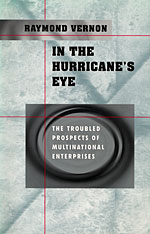
The world’s multinational enterprises face a spell of rough weather, political economist Ray Vernon argues, not only from the host countries in which they have established their subsidiaries, but also from their home countries. Such enterprises—a few thousand in number, including Microsoft, Toyota, IBM, Siemens, Samsung, and others—now generate about half of the world’s industrial output and half of the world’s foreign trade; so any change in the relatively benign climate in which they have operated over the past decade will create serious tensions in international economic relations.
The warnings of such a change are already here. In the United States, interests such as labor are increasingly hostile to what they see as the costs and uncertainties of an open economy. In Europe, those who want to preserve the social safety net and those who feel that the net must be dismantled are increasingly at odds. In Japan, the talk of “hollowing out” takes on a new urgency as the country’s “lifetime employment” practices are threatened and as public and private institutions are subjected to unaccustomed stress. The tendency of multinationals in different countries to find common cause in open markets, strong patents and trademarks, and international technical standards has been viewed as a loss of national sovereignty and a weakening of the nation-state system, producing hostile reactions in home countries.
The challenge for policy makers, Vernon argues, is to bridge the quite different regimes of the multinational enterprise and the nation-state. Both have a major role to play, and yet must make basic changes in their practices and policies to accommodate each other.
READERS
Browse our collection.
PUBLISHERS
See BiblioVault's publisher services.
STUDENT SERVICES
Files for college accessibility offices.
UChicago Accessibility Resources
home | accessibility | search | about | contact us
BiblioVault ® 2001 - 2024
The University of Chicago Press









